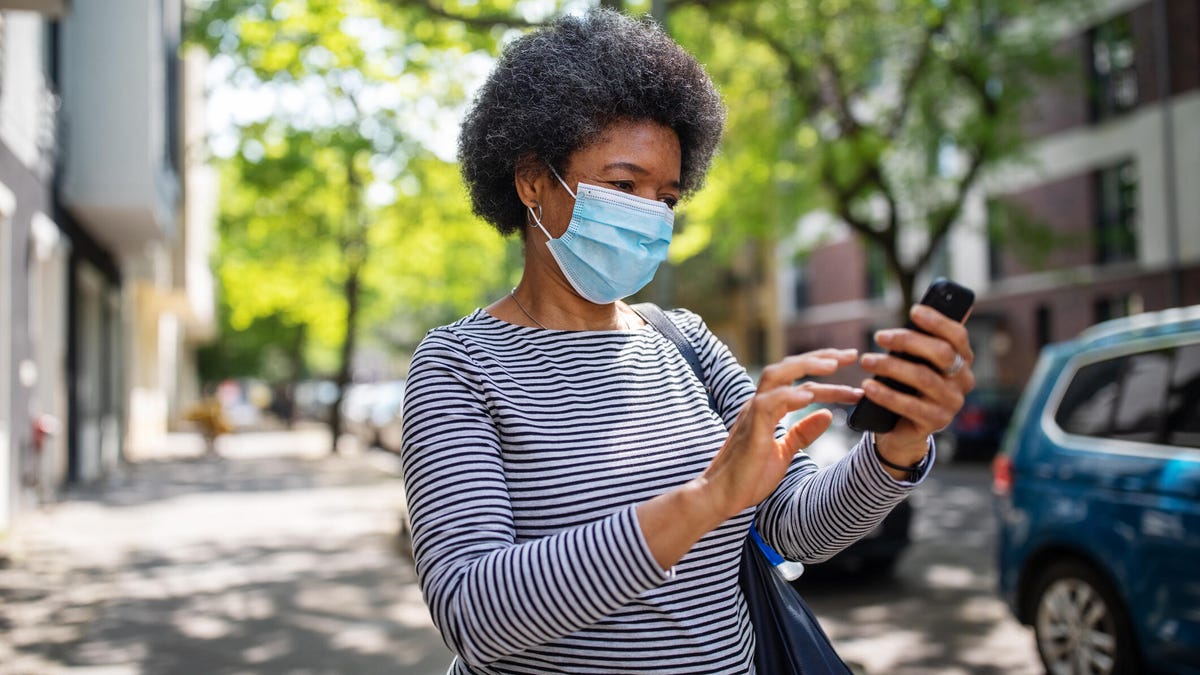iPhone 12 failed to address how Face ID is useless in the age of coronavirus
Commentary: Not being able to unlock your phone with your face while wearing a mask is a very 2020 problem that the iPhone 12 failed to address.

Face ID and masks do not go together.
It's been an exasperating year as almost every aspect of our lives has needed to be rethought due to the coronavirus pandemic. And one minor niggle that nobody could possibly have foreseen going into 2020 is that wearing masks everywhere has made it impossible to unlock your phone -- including Apple's new iPhone 12 -- with your face.
That doesn't mean you shouldn't bother wearing a mask. You should definitely be wearing a mask. But it doesn't change the fact that going back to inputting a PIN to unlock your phone while wearing a mask feels like a huge regression. The other option is to pull your mask down every time you need to use your phone, but that's neither hygienic nor practical.
Many were hoping that Apple would find a way around this new dilemma. Ahead of its iPhone 12 event last week, rumors were circulating that Apple had configured its Face ID verification tool to work with masks. Unfortunately, that didn't happen. And more disappointingly for those of us watching from home, Apple CEO Tim Cook didn't even mention it.
Apple first introduced Face ID, its facial recognition security system, back in 2017 on the iPhone X as the successor to Touch ID, its fingerprint sensor. It relies on Apple's TrueDepth camera system, which is made up of several components. Working together, the sensors and components project 30,000 infrared dots onto your face, which are used to map your curves and wrinkles.
Face ID is undoubtedly a complex piece of technology that has always relied on understanding the intricate terrain of our entire faces to work securely. Is it a lot to ask to expect Apple to have figured out a way for Face ID to remain as secure and effective while only having half our faces to scan? Perhaps, but I'd argue Apple has made a rod for its own back by encouraging us to trust that its technology can make our lives more convenient, not less.
What Apple does well -- and has always done well -- is remove unnecessary friction. From the seamless animations in its keynotes to the smooth marble banisters in the London flagship Apple Store, it feels like everything the company does and makes is designed to mimic the elegant glide of a finger across a ceramic-coated touchscreen. The company prides itself on its products just working, and largely they do -- it's the reason why CNET has continued to praise and recommend Apple's products over the years.
This reputation has shaped our admittedly high expectations of what an Apple product should be. We're used to them absorbing all the clunkiness of being human, helping us cope with small annoyances by meeting us where we are. So is it any wonder that right now, in this moment when so much in our lives feels newly strange and difficult, that we expect Apple to provide the tools to help us navigate this particular tech grievance?
Touch ID to the rescue? Not on the iPhone 12
Even if making Face ID compatible with face masks was always going to be an impossible ask, Apple does have another biometric technology at its disposal that could have stepped in to save the day. The aforementioned Touch ID, which was hidden in the iPhone's now-defunct home button could have been the perfect solution for mask wearers in these difficult times.
It's hard to understand why Apple couldn't find a way to integrate Touch ID into a new iPhone model -- it's already done so on the recently updated iPad Air . Having both Face ID and Touch ID wouldn't just allow users to take advantage of different biometric verification depending on their circumstance, it could also be used for two-factor authentication should one option fail -- as often happens when I attempt to unlock my phone while yawning, for example.
Perhaps the long development process of new phones -- from about a year to 18 months -- explains why it didn't happen. With the pandemic not even a year old, might not have had the time to add Touch ID into the iPhone 12. But with coronavirus pandemic going nowhere fast and mask-wearing now the norm for the foreseeable future, it could well find a place within next year's iPhone cohort.
Even if Touch ID does make it back to the next iPhone, that leaves us with at least a year of not being able to unlock our phones with our faces in public -- a fact that Apple hasn't even acknowledged. It's a shame that with no end in sight to the coronavirus pandemic Face ID is going to remain useless to us whenever we leave our houses. But let's hope that the company we rely on to make technology seamless and a pleasure to use has something cooking behind the scenes.
Apple didn't respond to a request for comment.

